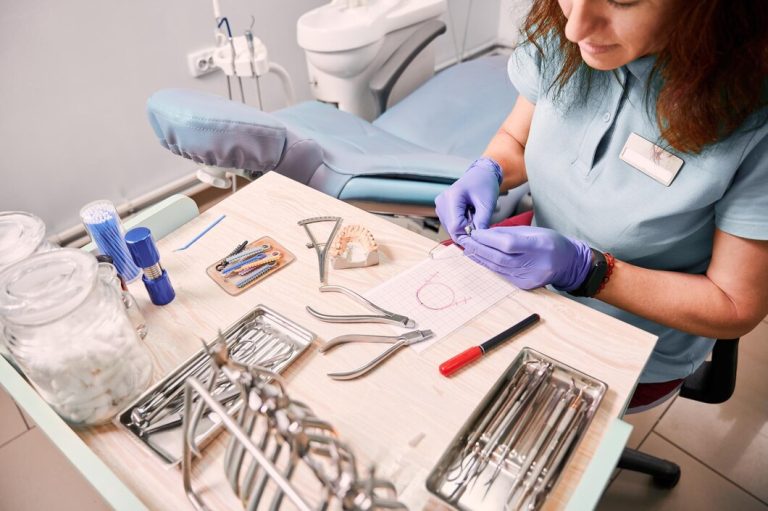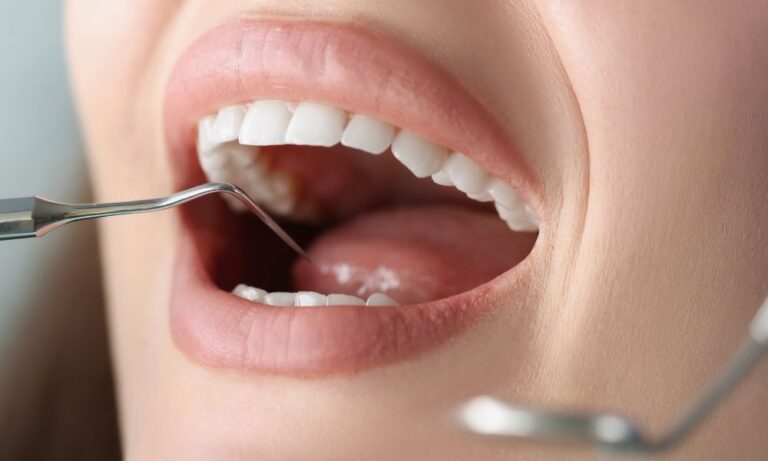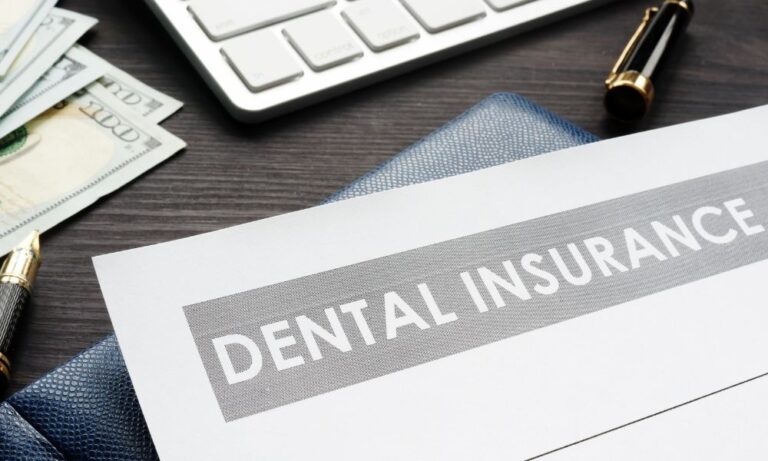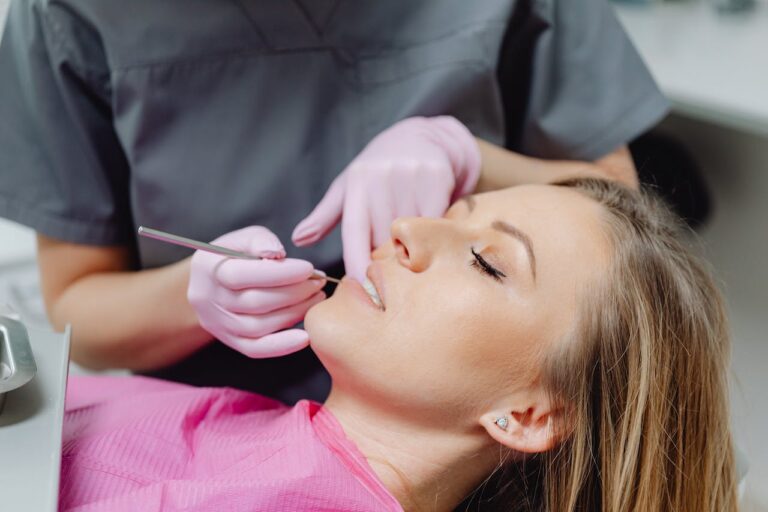Healthy gums are essential for a healthy mouth. Often, gum issues start small but can quickly become significant problems if left untreated. Checking for early signs of gum issues at home can help you catch problems before they become serious. Avoiding more complex treatments later can save you time, pain, and money.
This guide will help you understand how to check for early gum problems at home. It will cover critical signs of gum issues, how to conduct a self-check, tools and products that can help, and when to seek professional help. Keeping an eye on your gum health can make a big difference in maintaining a beautiful and healthy smile all year round.
Key Signs of Early Gum Problems
Recognizing the early signs of gum problems can help you address issues before they worsen. Here are some key signs to look out for:
1. Redness and Swelling: Healthy gums are usually pink. If your gums appear red or swollen, this could be an early sign of gum disease. Inflammation is the body’s way of fighting off bacteria, but persistent redness can indicate a problem.
2. Bleeding Gums: Gums that bleed when you brush or floss may be a sign of gum issues. This can happen if you are brushing too hard, but it can also mean that your gums are inflamed and need extra care.
3. Bad Breath: Persistent bad breath halitosis can signify plaque buildup. Plaque is a sticky film of bacteria that forms on teeth and gums and can lead to infection if not removed.
4. Gum Recession: If your teeth look longer than they used to, you might have receding gums. This occurs when the gum tissue pulls back, exposing more of your tooth and its roots.
5. Sensitivity: Increased sensitivity to hot or cold foods is another sign. When gums recede, the roots of teeth become exposed, causing discomfort.
How to Conduct a Self-Check for Gum Health
Checking your gums at home is simple and can be done regularly to catch any issues early. Here’s how you can do it:
1. Visual Inspection:
- Mirror Check: Use a small mirror to inspect your gums. Look for any changes in color, swelling, or bleeding. Healthy gums should be firm and pale pink.
- Light Pressure: Press on your gums to see if they bleed or hurt. Bleeding or pain could be a sign of inflammation or infection.
2. Brushing and Flossing:
- Observe Bleeding: Seeing blood on your toothbrush or dental floss might indicate gum problems. Remember to floss gently and use a soft-bristled toothbrush.
- Check for Pain: While brushing and flossing, note any areas that feel unusually tender or sore. Pain can indicate that you need to pay more attention to that area.
3. Monitor Bad Breath:
- Morning Test: Note if you have bad breath right after waking up, but also consider your breath throughout the day. Persistent bad breath is a sign that you might have plaque buildup.
- Tongue Check: Look at your tongue for white or yellow coatings that can contribute to bad breath and indicate bacterial growth.
4. Track Changes Over Time:
- Daily Observations: Check your gums for a few minutes each day. Keeping a routine can help you spot changes early.
- Note Any Patterns: If you frequently notice symptoms like bleeding or foul breath, note them. Consistent patterns can help dental professionals diagnose issues more effectively.
Tools and Products That Can Help
Using the right tools and products can make a huge difference in keeping your gums healthy. Here are some must-have items:
1. Soft-Bristled Toothbrush: A toothbrush with soft bristles is gentle on your gums while still effective at cleaning teeth. Electric toothbrushes can also be more efficient in removing plaque.
2. Floss: Regular dental floss or interdental brushes can help clean between teeth and along the gumline. Water flossers can be an excellent alternative for those who find traditional flossing difficult.
3. Antimicrobial Mouthwash: Mouthwash helps kill bacteria in your mouth, reducing plaque and freshening breath. Look for mouthwashes that are specifically designed to combat gum disease.
4. Toothpaste for Gum Health: Choose a toothpaste for gum health. These often contain ingredients like fluoride and stannous fluoride, which help reduce inflammation and repair damage.
5. Tongue Scraper: A tongue scraper helps remove bacteria and food particles from your tongue, reducing bad breath and promoting oral health.
6. Chewing Gum: Sugar-free chewing gum can help increase saliva production, which washes away food particles and neutralizes acids in your mouth.
When to Seek Professional Help
While regular home care is crucial for gum health, there are times when professional help is necessary. Here’s when you should see a dentist:
1. Persistent Symptoms: If you notice symptoms like bleeding, swelling, or bad breath that don’t go away with regular care, it’s time to see a dentist. Persistent symptoms can indicate more serious issues that need professional treatment.
2. Gum Recession: If you notice your gums pulling back from your teeth, exposing the roots, make an appointment. If not treated, receding gums can lead to tooth sensitivity and even tooth loss.
3. Pain and Discomfort: Any pain or discomfort in your gums should not be ignored. Schedule a dental visit to identify the cause and get appropriate treatment.
4. Loose Teeth: If your teeth feel loose or you notice any changes in how your teeth fit together when you bite, seek professional help immediately. This can be a sign of advanced gum disease.
5. Regular Check-Ups: Regular dental check-ups are essential, even if you don’t have noticeable symptoms. Dentists can spot early signs of gum disease and other issues you might miss during self-checks.
Conclusion
Keeping an eye on your gum health at home is a simple yet effective way to prevent serious dental issues. By noticing key signs like redness, swelling, and bleeding, you can take immediate steps to address them. Regular self-checks, using the right tools, and knowing when to seek professional help can make all the difference.
Remember, healthy gums are crucial for a healthy mouth and overall well-being. Good oral hygiene and staying informed about gum health can prevent problems before they become severe. If you ever notice persistent symptoms, don’t hesitate to contact a professional.
For expert gum care and personalized advice, schedule an appointment with Colorado Gum Care Broomfield, CO. Our team of oral surgeons in Broomfield is here to help you maintain a healthy smile all year round. Contact us today to take the first step towards healthier gums!







